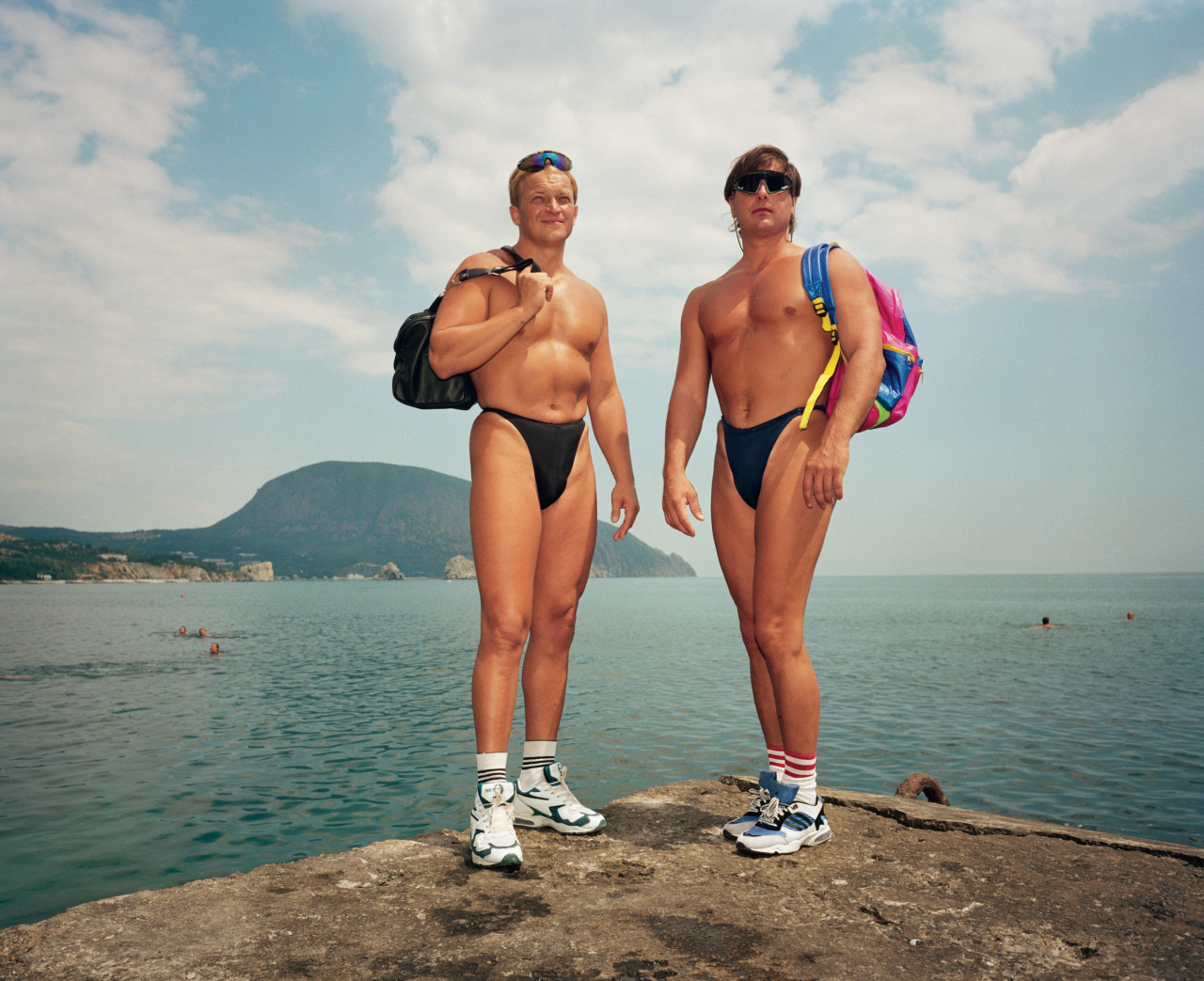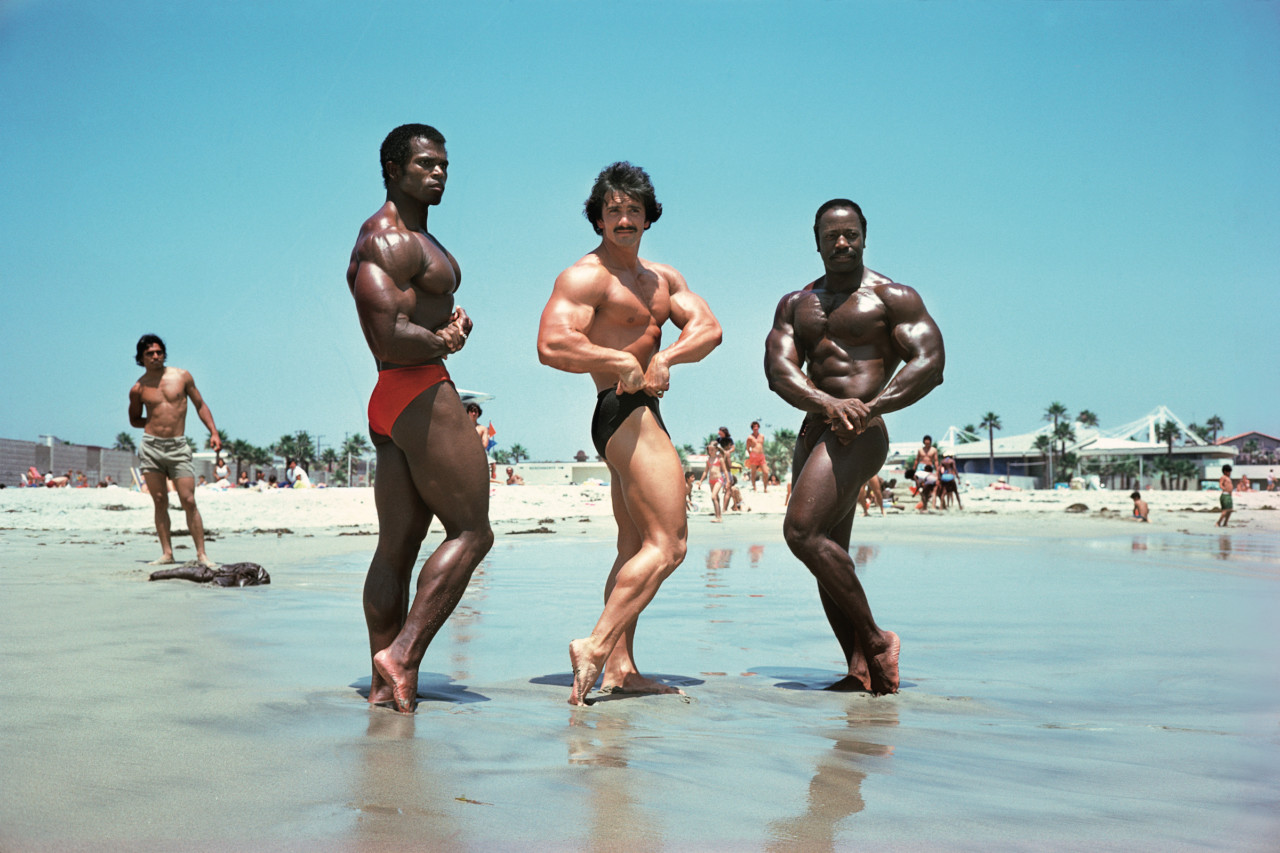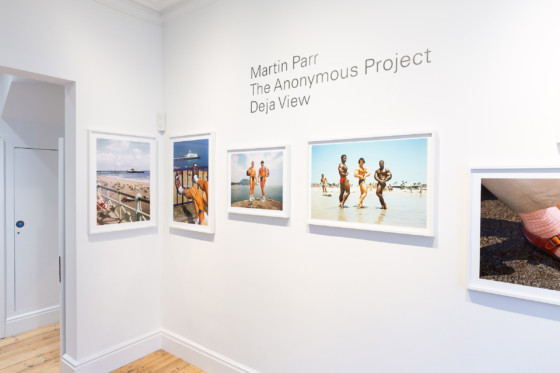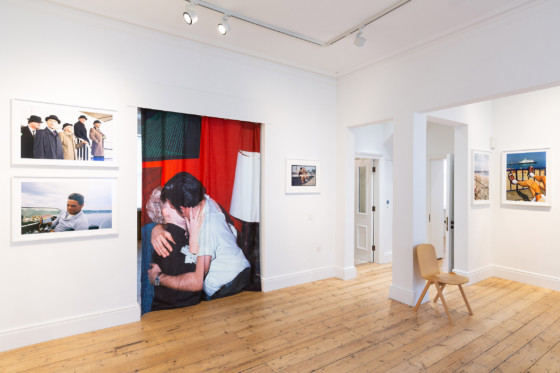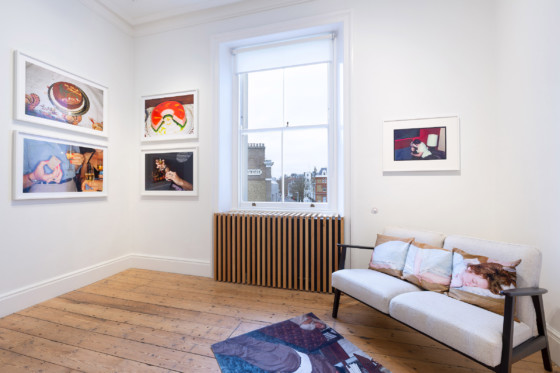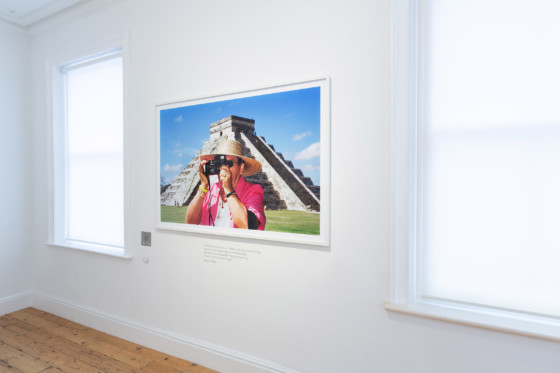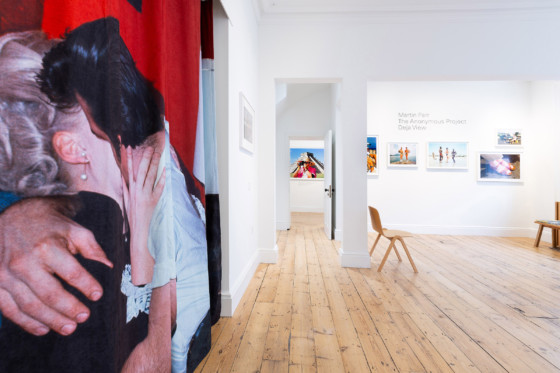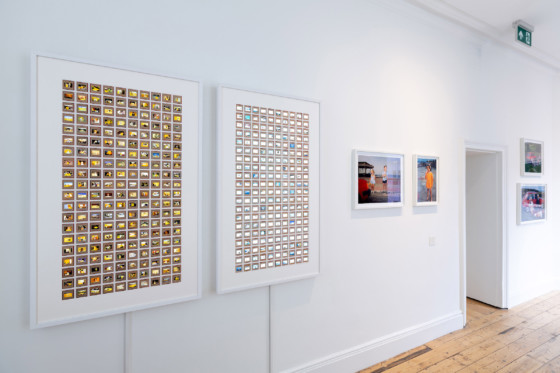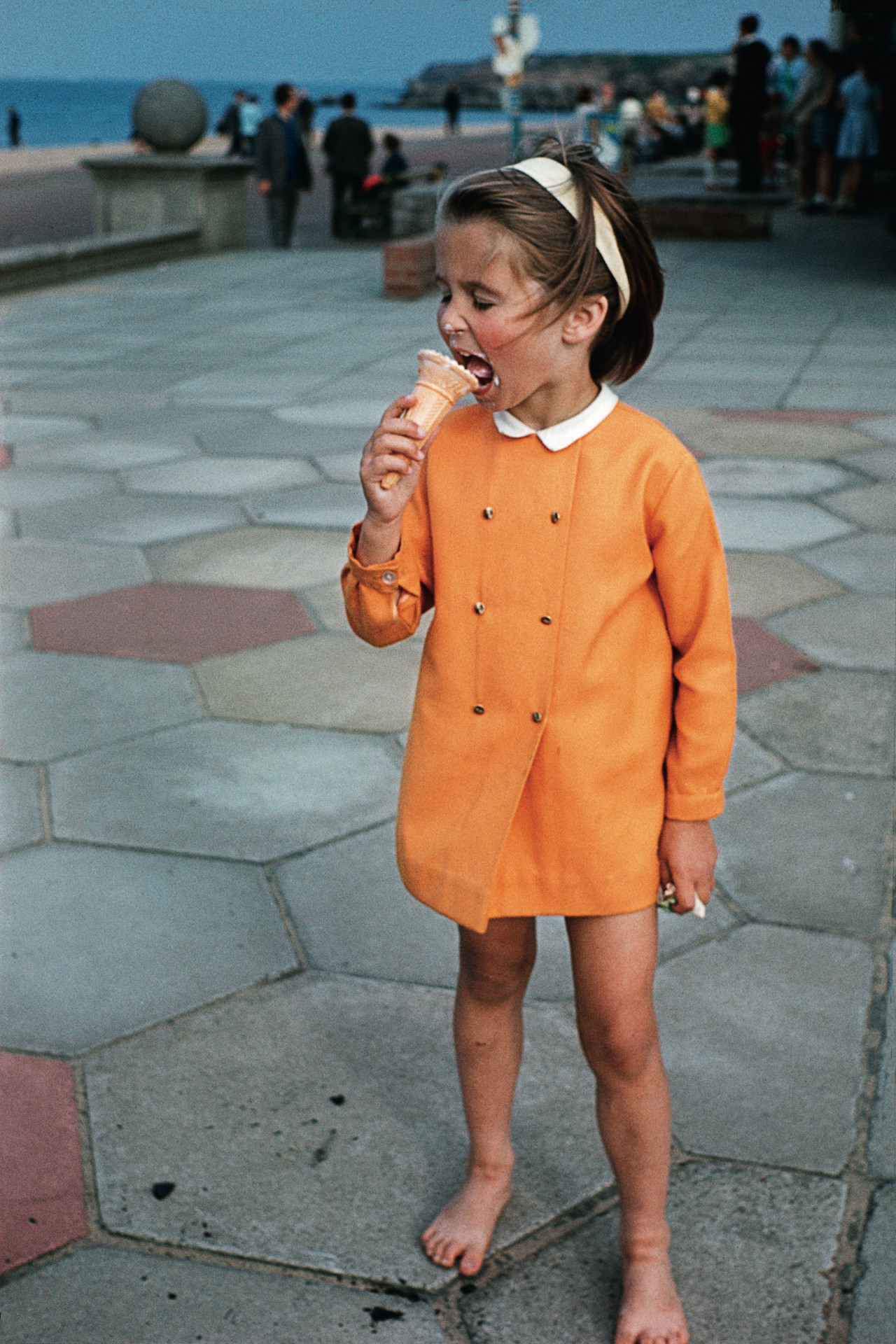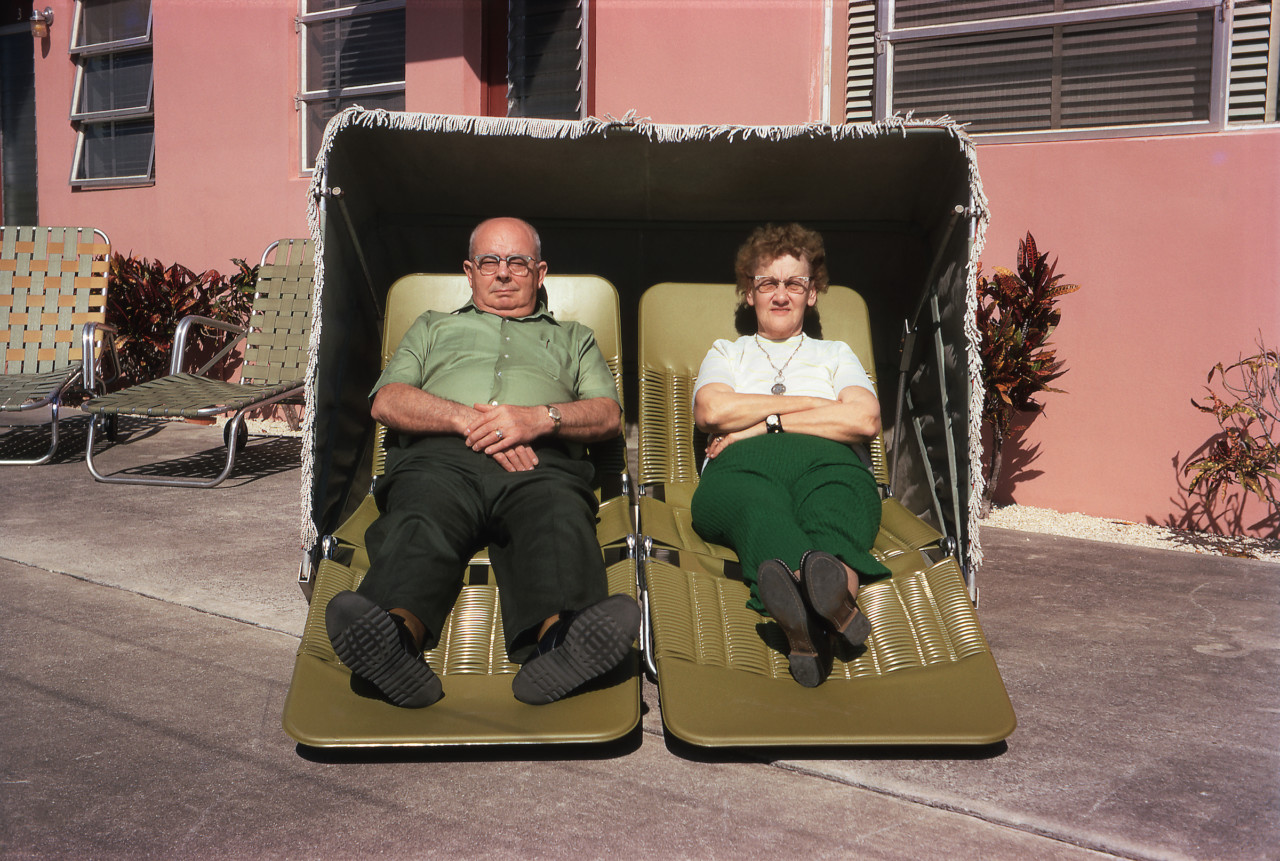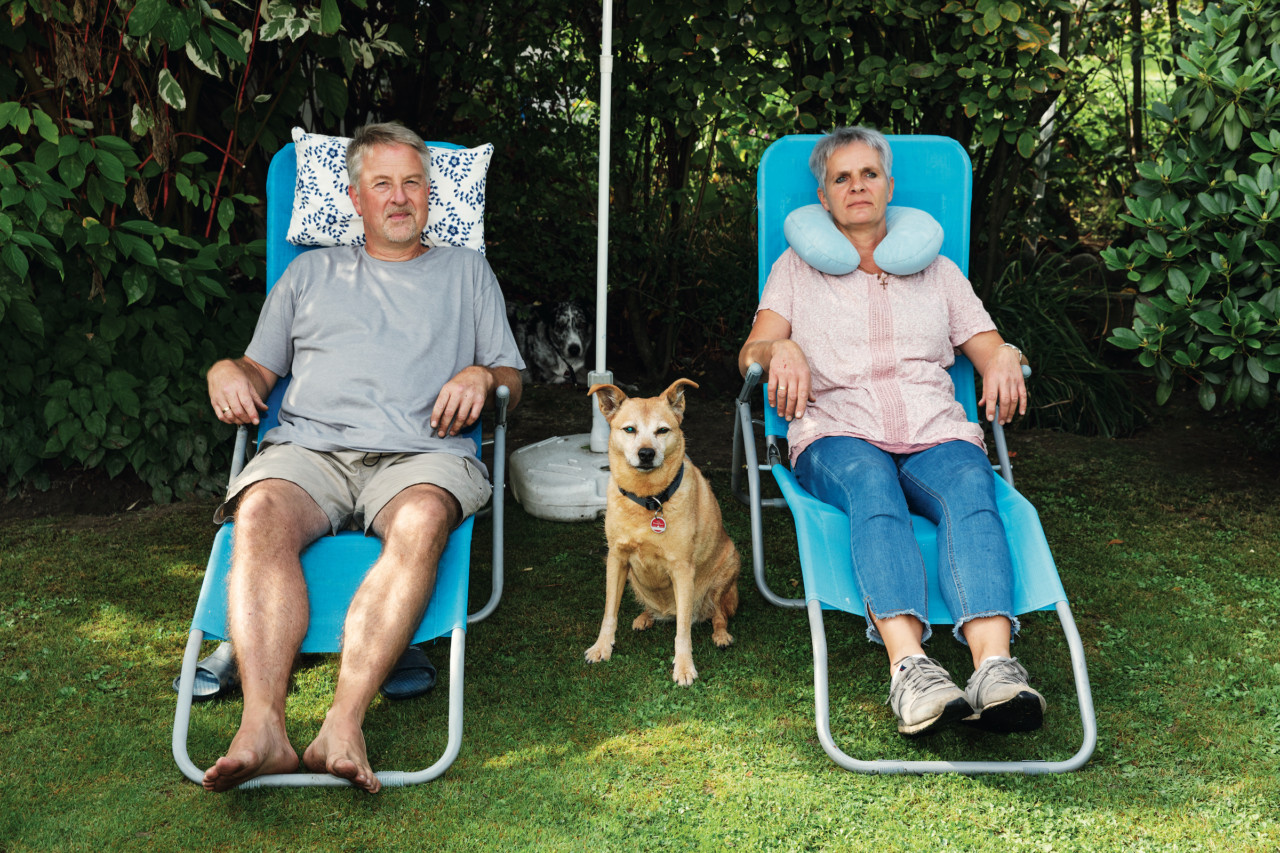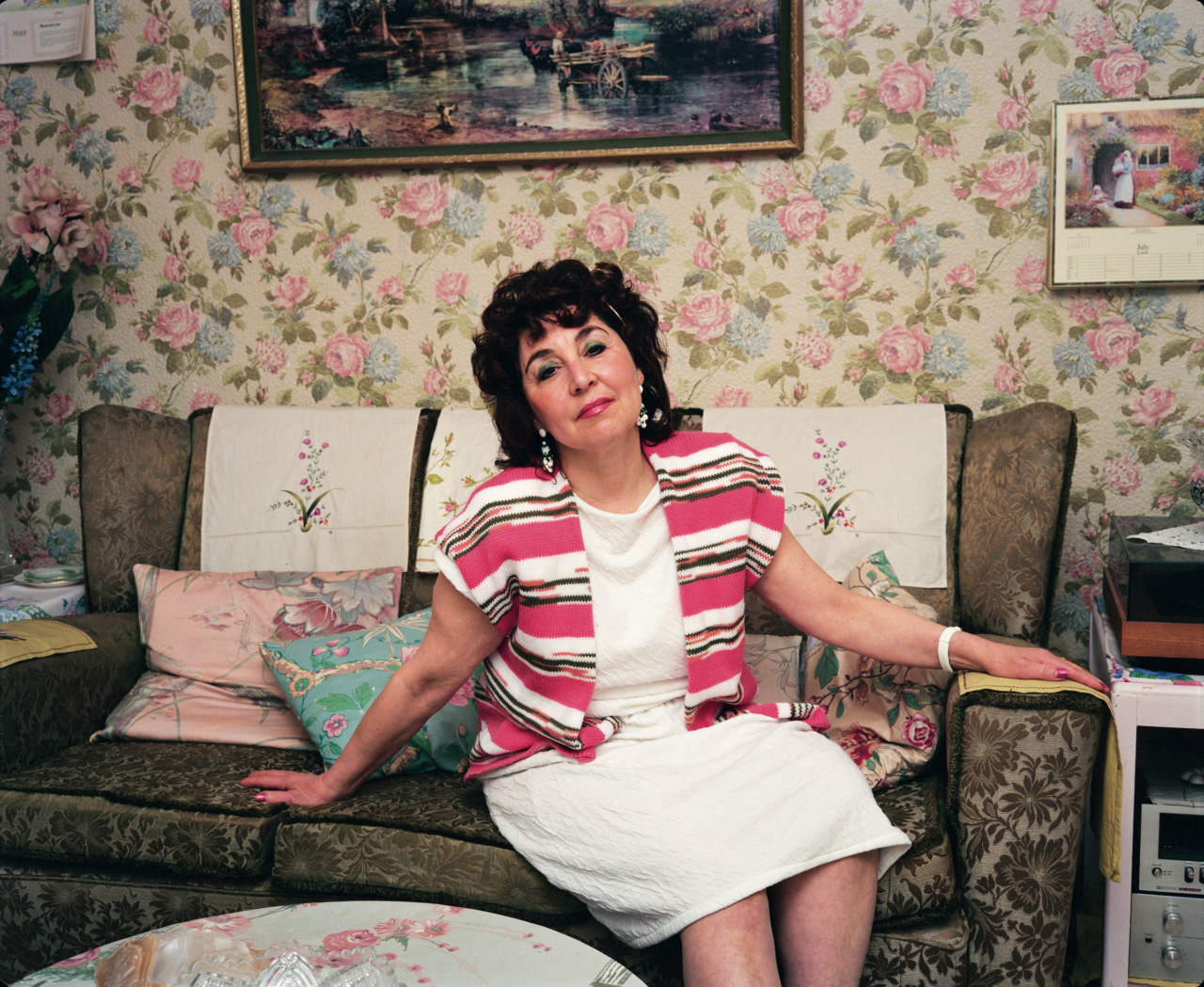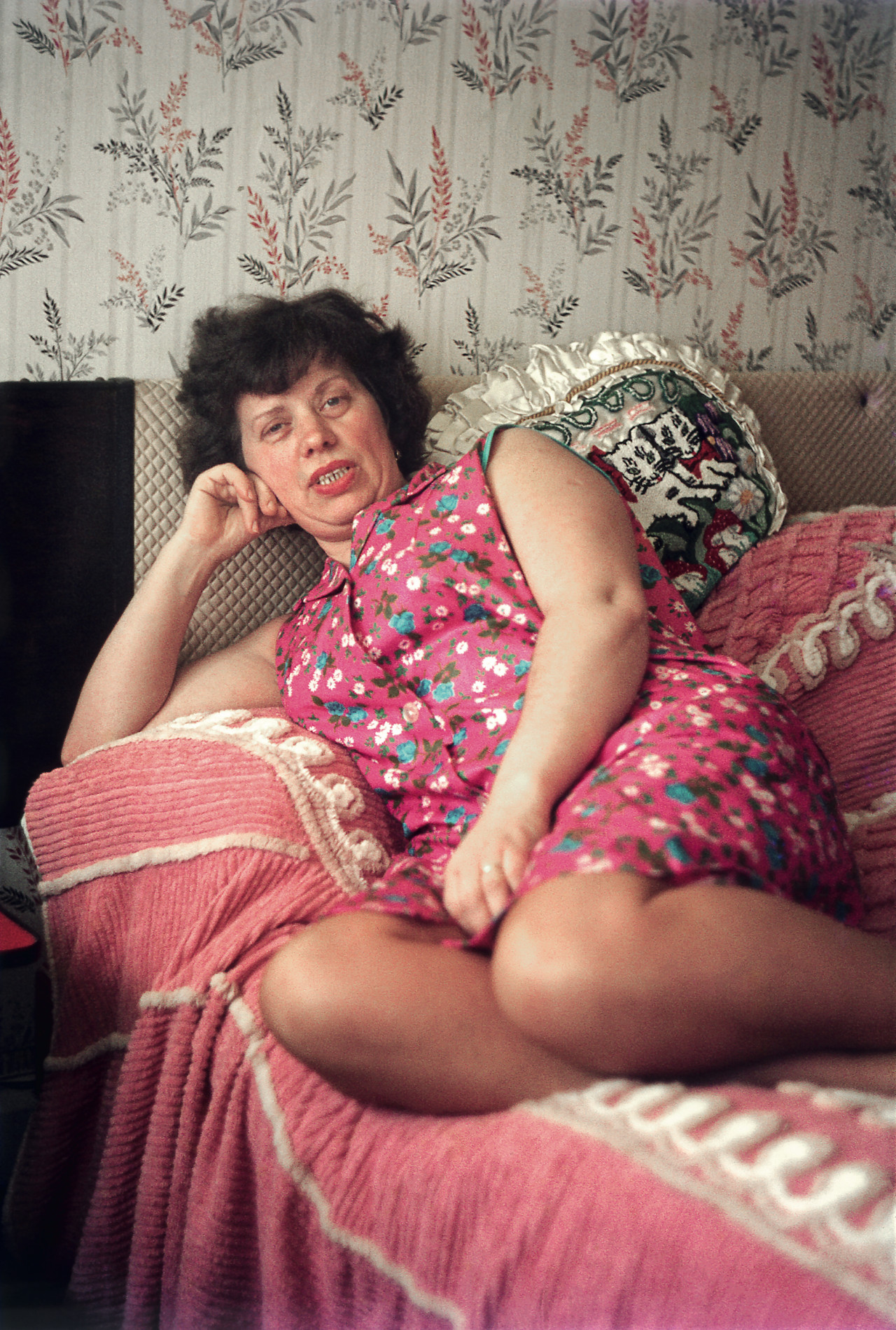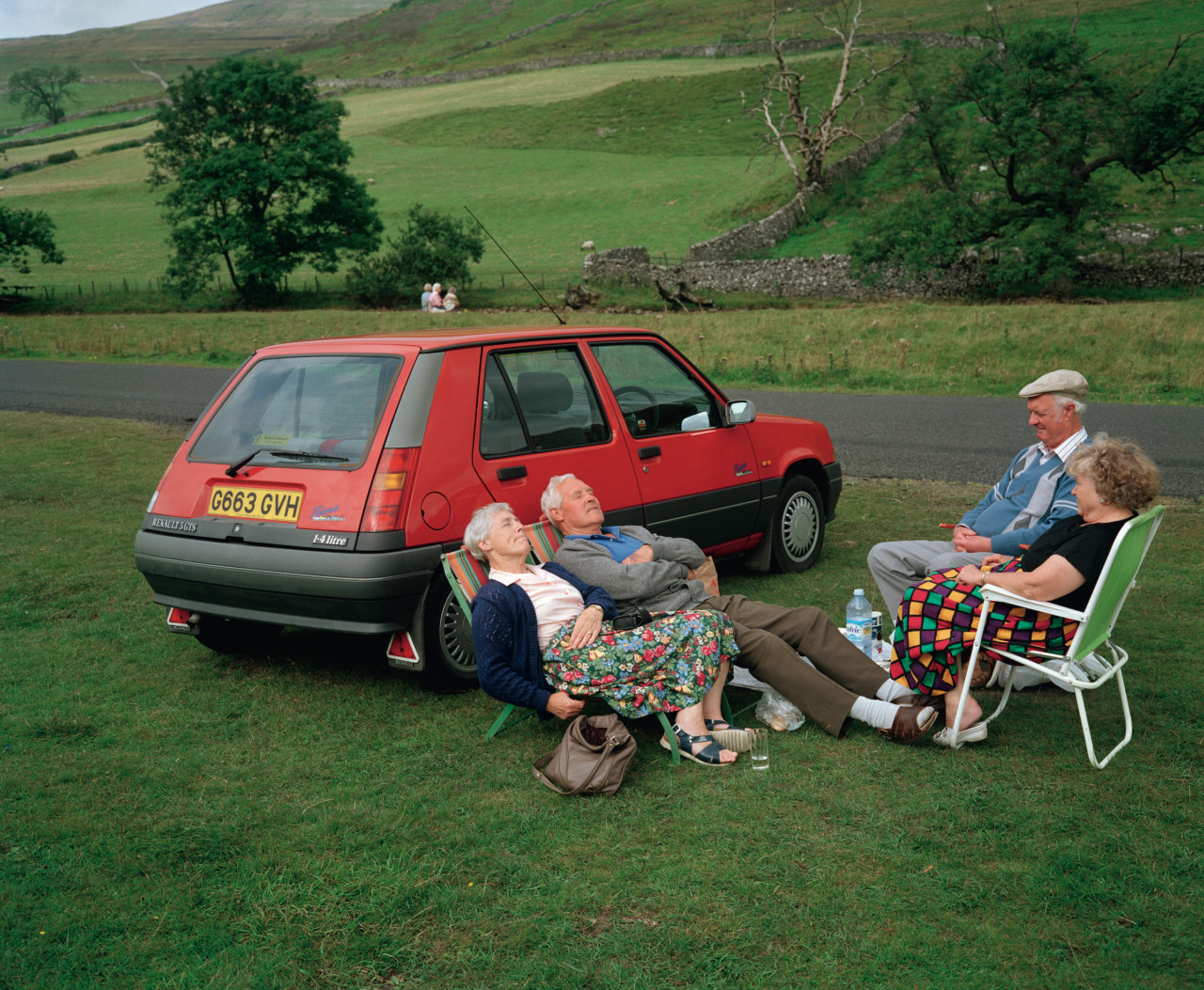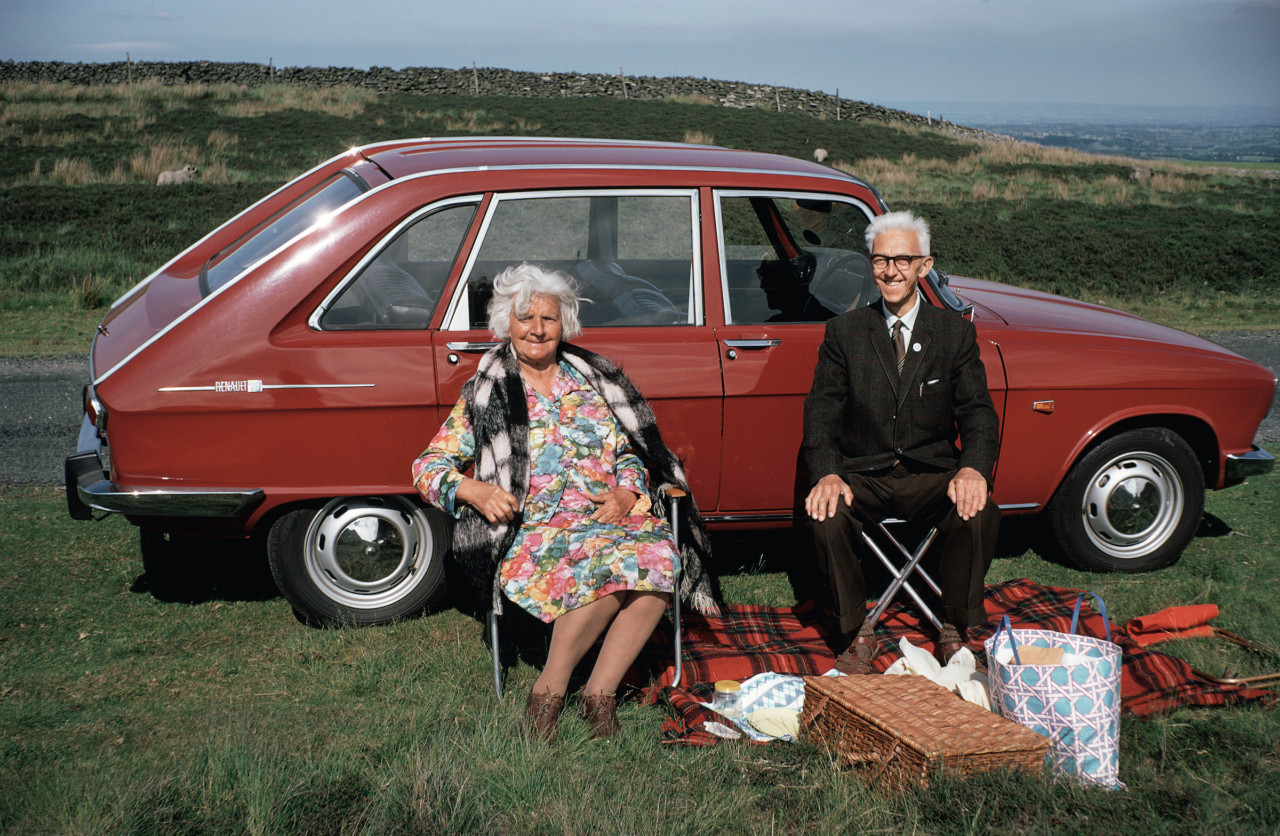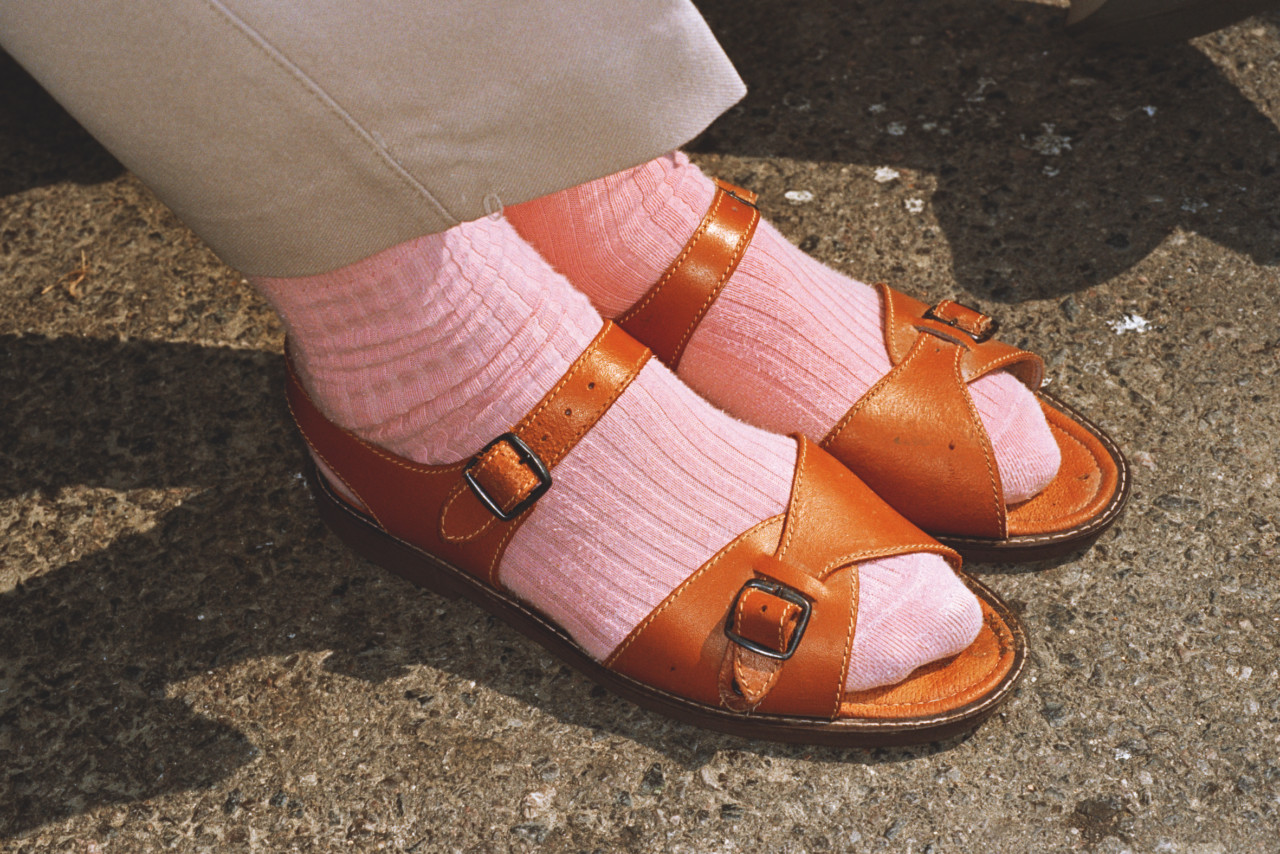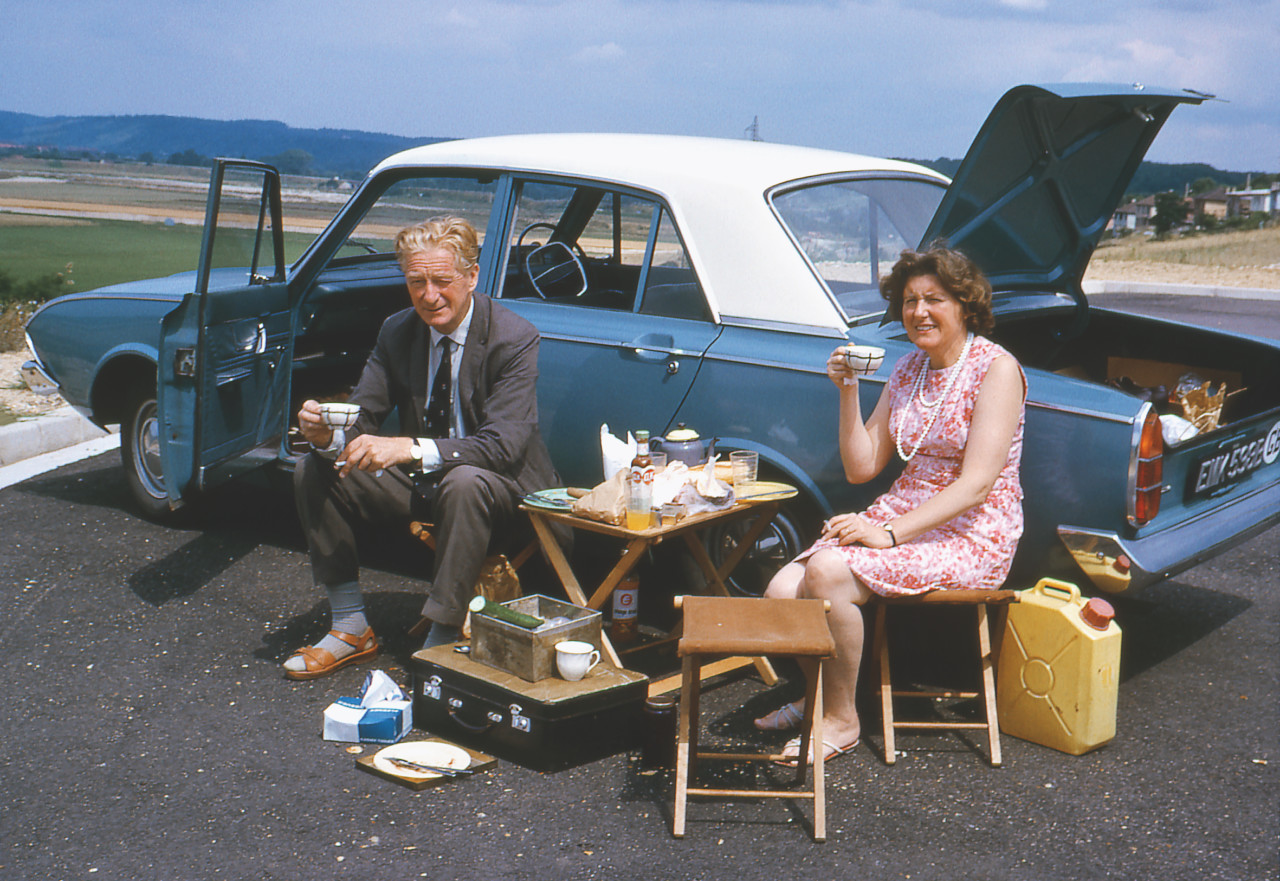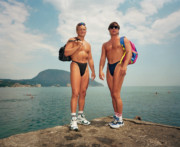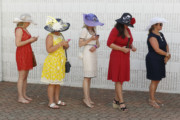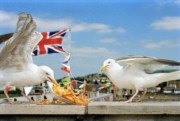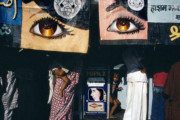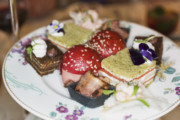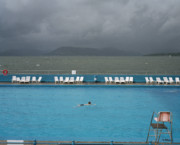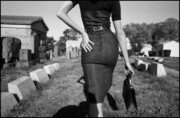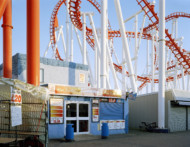Stop Me If You’ve Seen This One Before
Martin Parr collaborates with The Anonymous Project for a series of uncanny picture pairings that can be seen in London this February.
Did you ever get that uncanny sense of the present as a vividly experienced repeat of something past? You may well experience a similar feeling if you visit Magnum’s exhibition at Cromwell Place in London this February.
And no, not just because its latest show is a 3D manifestation of 2021’s collaboration between Martin Parr and Lee Shulman of The Anonymous Project, which resulted in a book published by Textuel. Rather, it’s because the very concept of déjà vu is the cue for this playful conversation between two important photographic archives.
The book – and now the exhibition – consists of pairs. For each work by Martin Parr, there is a paired image from The Anonymous Project‘s collection of amateur photographs, taken between the 1950s and 80s. Featuring holidays, celebrations and people from all walks of life, the photographs represent some of Parr’s most iconic works in dialogue with vernacular photography at its finest.
Titled Déjà View, the exhibition was first shown at Magnum Paris last autumn, and can now be seen in London as the inaugural exhibition marking Magnum’s presence at Cromwell Place, a multi-purpose art space in central London, from February 01 to 19
Here, below, we reproduce a conversation between Parr and Shulman, moderated by Dimitri Beck, Director of Photography at Polka, which was first published in French in the original book by Textuel, and then in English, published by Hoxton Mini Press, which are available in the Magnum Photos Shop.
How did the book come about?
Lee Shulman I contacted Martin, whose work I’ve known for a long time. Twenty-five years ago, as a film student, I came across his book The Last Resort in our photography classes.
Martin Parr Did you buy it?
LS I did! The first edition didn’t have a photograph on the cover, unlike the subsequent re-editions. I had no idea what I would find inside.
Picking it up and leafing through the pages was an un-forgettable experience – a rude awakening! I was fascinated and blown away by your proximity to the people in your photographs. Everything was new to me: the use of daylight flash, the tightly framed compositions, everyday scenes captured simply, without artifice, getting in close to your subjects, at the heart of the action… This new vocabulary had a profound effect on me.
I think my selection for Déjà View demonstrates that.
Martin, why did you agree to take part in this project?
MP So that I can be sure to crop up where I’m least expected! I admit, it never occurred to me to associate my photographs with anonymous, amateur pictures until Lee suggested it. And I liked the book’s premise – it’s a good, unusual idea.
I saw his extraordinary installation, The House, at the Rencontres d’Arles in 2019. I adore vernacular photography and that show had all the things I love about it. So when Lee invited me to mix my own pictures with shots from The Anonymous Project archive, I accepted immediately.
He showed me a few matches he had made, so that I could see what he had in mind. I liked it. I made a few comments, of course, but really I had no hand in it, all of the choices are Lee’s.
LS Searching for similar photographs and pairing them up was an organic process that was a lot of fun, and actually quite exciting. From about 200 matches in total, we made a final selection of around 70 ‘twinned’ shots, all from the 1950s through to the 1980s, mainly from America and Britain, with a few from elsewhere in Europe. We were looking for diverse settings and situations, light-hearted, everyday moments (holidays, leisure time, life celebrations), ordinary scenes captured across different eras.
"It’s straightforward, unpretentious. Just the pure act of taking a photograph, with no preconceived aims or ideas."
-
How do you explain your shared fascination with amateur photography?
MP When I was young, Larry Sultan and Mike Mandel’s book Evidence (1977) was a revelation. The two of them married their own experimental pictures with images chosen from American archives: transportation, energy, aeronautics, the police. In the book, they were shown out of context, with no captions or dates. How could amateur photographers take such exceptional pictures? The book made a huge impression on me.
I love the principle and the spirit of vernacular photography. I’m interested in the relationship between the subject and the person taking the photograph – it’s straightforward, unpretentious. Just the pure act of taking a photograph, with no preconceived aims or ideas.
It’s very difficult to take good photographs of ordinary, everyday life. That’s what I like to try and do, it’s what motivates me to get out and about with my camera. There’s no guarantee that you’ll get a good picture, but there’s always a chance you’ll be pleasantly surprised. You have to work hard and take a lot of bad pictures before you get one good one. And I’ve taken a lot of bad ones, believe me!
What makes a good photograph?
MP A good photograph is a picture that tells a story, that has an energy, that captivates you, the viewer.
But having said that, it’s something that’s very difficult to pin down. If I had the perfect formula, I probably wouldn’t still be working as a photographer! You can’t take great photographs to order. You can’t predict where and how a photograph will come to you. That’s the magic of photography. Taking the picture isn’t the most important thing. Anyone can take a picture nowadays. Being a photographer means knowing how to choose an image. Isn’t that right, Lee?
LS Absolutely. The editing process and the choice of pictures are fundamental, as far as I’m concerned. Everyone talks about taking the shot, that decisive moment when the photographer captures an image. But what comes next, the selection process, is every bit as precious and delicate. Picking out the gems from a mountain of pictures is what I do every day. When I select a photograph, I have no idea whether it’s good because the author was a professional or because they happened by chance to be in the right place at the right time.
And ultimately, it doesn’t matter. What matters is that you’re lucky enough to have the picture there, right before your eyes. Creating and producing a photograph depends on the most tenuous of circumstances (like being in a good mood, with a decent cup of coffee). It’s all about the moment. Martin’s close-up of the sandals is such a good photograph – it’s one of my favourites. In response, I suggested an image with a much wider angle, in which we see a man wearing the same type of footwear. Like two different shots from the same film: there’s a feeling of movement, of a story being told.
And on the other hand, what makes a bad photograph?
MP A photograph that has no energy! There are too many pretentious pictures nowadays, based on concepts learned in art school lectures. A photograph should come from the bottom of your heart.
LS Absolutely. What the purists might dismiss as a bad photograph will work if it captures the moment, with authenticity. I love it when a hand, an arm, or some object, intrudes into the frame by chance. It’s the accident that gives the shot its energy. It doesn’t matter if it’s out of focus, or badly composed. Never try to re-frame a composition by cropping it. It will lose all its originality and spontaneity – its honesty.
Do you feel jealous, Martin, when you see some of the photographs paired with yours? Are you essentially a professional who borrows the codes of amateur photography?
MP I want to take the sort of pictures people would have taken themselves. My grandfather, George Parr, was a very keen amateur photographer. He instilled his passion in me. What I love is the spontaneity and purity of the moment when you take the shot.
LS I come from the world of film, but I’ve always dreamt of being a photographer. It’s something that’s always frustrated me. But working on this project, I realised that it was like being a film-maker who works with directors of photography, or production designers, who have already taken care of the set, the camera angles, the lighting… It’s up to me to put the pictures together, to create a new narrative from shots taken by other people. It’s hard to find a title that describes what I do. I combine different facets of my personality: I’m firstly a collector but also a director, an editor, and maybe even an artist in one sense. I guess ‘storyteller’ sums it up best.
This book is often very funny, there’s a joyfulness about it. Do you see it as a kind of visual sociological study?
MP Try not to twist the aims of the project or over-intellectualise it. That’s not my aim, it’s not how I see it. All that matters is that the photographs that have been chosen are good! Of course, there’s a sociological dimension if you study the details. Even the changes in people’s clothes and hairstyles. It’s worth it for that alone.
LS It’s a straightforward visual dialogue. Simple, humane, accessible.
Martin, do you recognise yourself in the descriptions people often apply to your work – mischievous, deadpan, even cynical?
MP I’m honest, not cynical. A cynical photograph has something to sell – a product, or a concept. I just love looking at people, watching what they do, and photographing them. I feel a genuine, deep love for people just as they are, that’s the foundation of my entire work. And I never tire of it.
"I’m anti-nostalgic on principle."
-
The photographs in this book date from the 1950s through to the 1980s. Are you both nostalgic?
MP Lee is, probably, in his choices. More than me. I’m anti-nostalgic on principle, and I hate nostalgia in pictures. I don’t want to lose myself in that way of looking at things. Perhaps I’m a little more nostalgic now, with age, but I’ve always wanted to live in the moment, in my own time. I call my own work into question every day, as I photograph the changing scene. The things I see happening in front of me are very much alive.
LS Some photographs make me feel nostalgic, like the one you took of the old, red Renault 5. I had one when I was young!
But what interests me most of all is the way The Anonymous Project gives people permission to concentrate on the narrative, emotional aspect of the pictures. The photographs are a kind of time machine, a way to travel back through our own memories, but the date on which they were taken is unimportant. Presenting a dialogue between Martin’s photographs and my archive creates a new story, in a way. Our combined pictures speak to what photography is and what it can contribute: a simple, happy moment, shared. It’s important to like a picture for what it communicates, for its aura, not because we’ve been told to like it. This is book is full of optimism, humour, love and humanity.
MP I agree. This book is pure, simple and direct. For me, it’s everything I love most.
This interview is reproduced with the kind permission of Textuel.
For further details on the Cromwell Place exhibition, visit here.
Shop the Martin Parr collection here.


